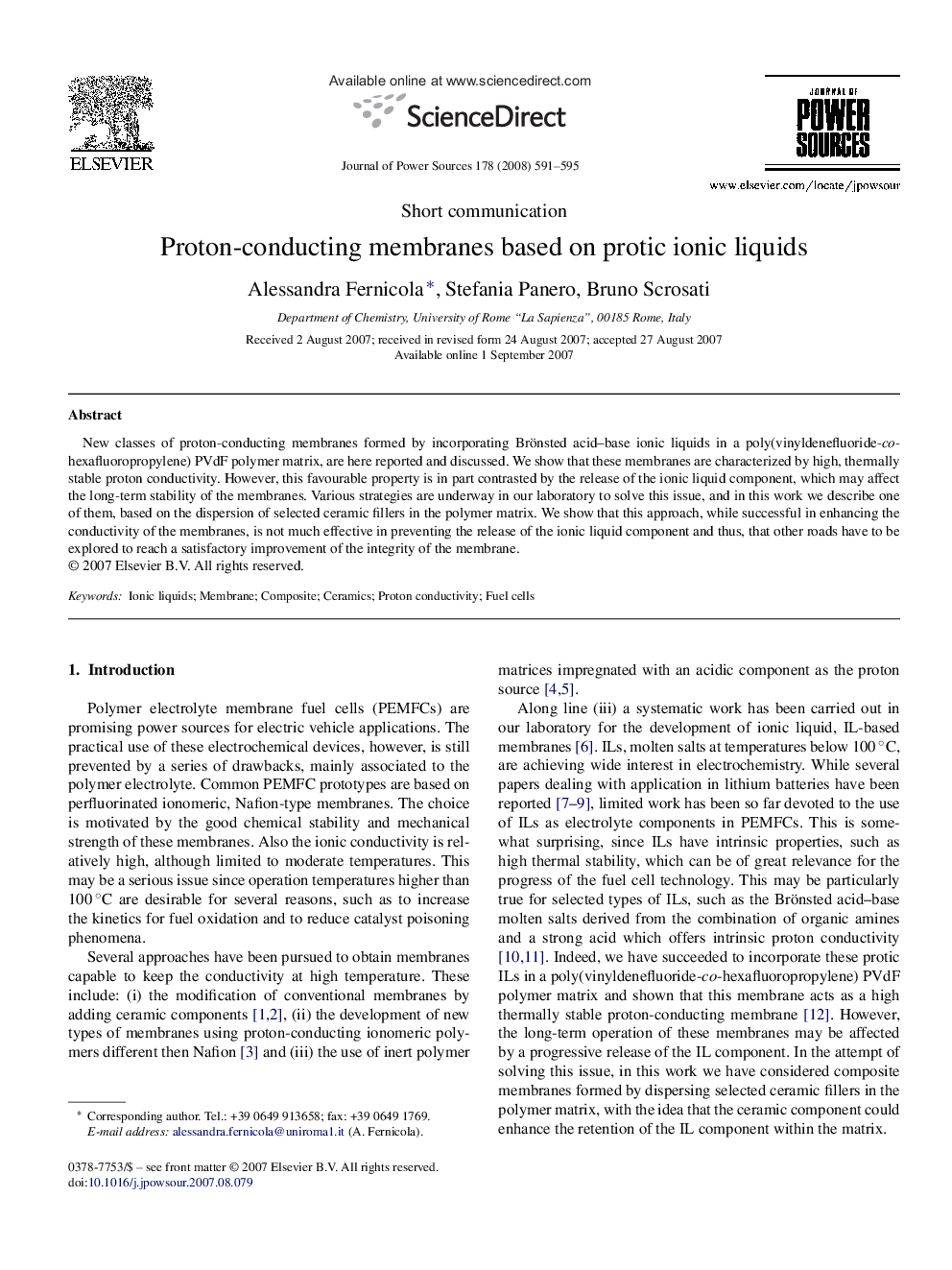| Article ID | Journal | Published Year | Pages | File Type |
|---|---|---|---|---|
| 1290718 | Journal of Power Sources | 2008 | 5 Pages |
New classes of proton-conducting membranes formed by incorporating Brönsted acid–base ionic liquids in a poly(vinyldenefluoride-co-hexafluoropropylene) PVdF polymer matrix, are here reported and discussed. We show that these membranes are characterized by high, thermally stable proton conductivity. However, this favourable property is in part contrasted by the release of the ionic liquid component, which may affect the long-term stability of the membranes. Various strategies are underway in our laboratory to solve this issue, and in this work we describe one of them, based on the dispersion of selected ceramic fillers in the polymer matrix. We show that this approach, while successful in enhancing the conductivity of the membranes, is not much effective in preventing the release of the ionic liquid component and thus, that other roads have to be explored to reach a satisfactory improvement of the integrity of the membrane.
